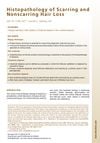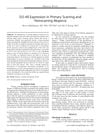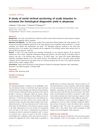Histopathologic Spectrum of Alopecia
February 2007
TLDR Combining vertical and horizontal sectioning improves scalp biopsy analysis for alopecia.
The study analyzed scalp biopsies from 40 patients with alopecia to understand the histological changes in various types of alopecia and the benefits of combining vertical and horizontal sectioning. Scarring and non-scarring alopecia were almost equally represented, with lichen planopilaris being the most common variant of scarring alopecia. The study highlighted the need for immunofluorescence studies in cases of scarring alopecia due to overlapping microscopic features. Alopecia areata was identified as the most common cause of hair loss, diagnosed by peribulbar inflammation and nanogen hair follicles. The research suggested that combining vertical and transverse sectioning allows for a more thorough examination of scalp biopsies.






